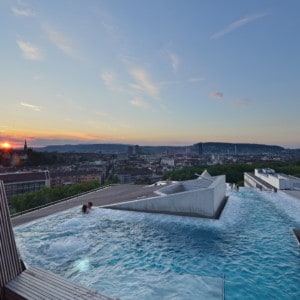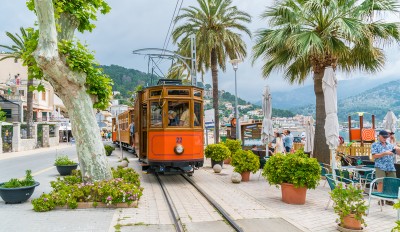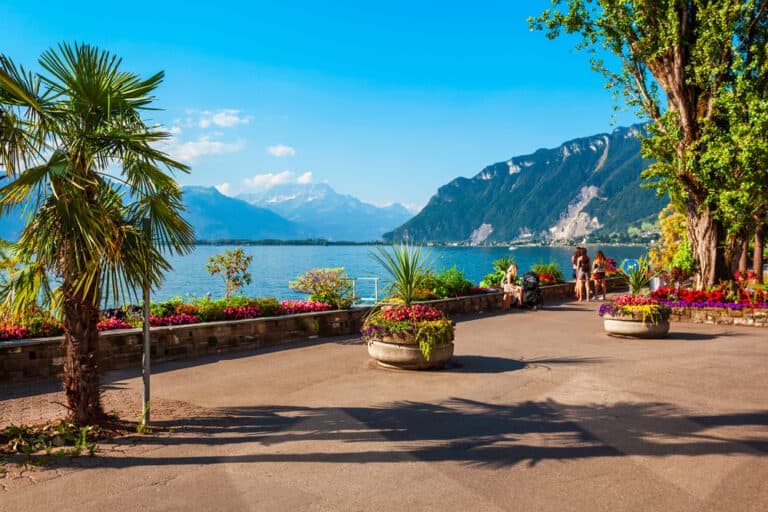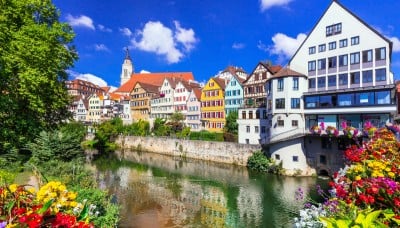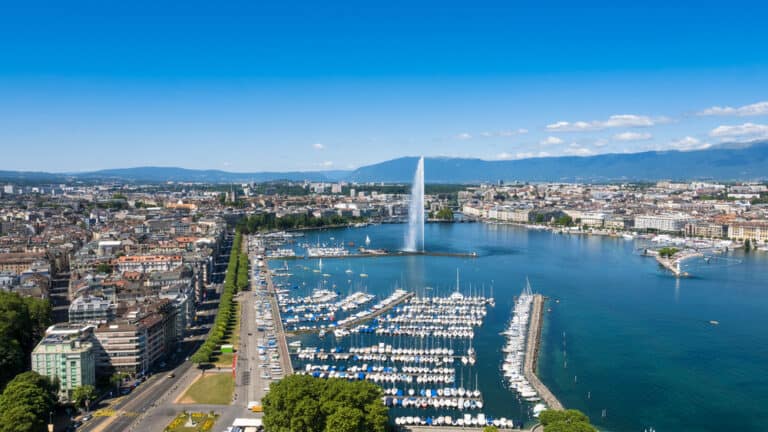Inspirational ideas for short breaks: 6 places to go in Europe in autumn 2021
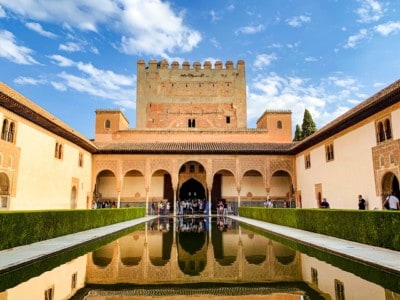
By Emma Marshall
Times are tough at the moment. We all need to stay safe and well and this means remaining at home.
But if you’re like me and love travelling and seeing new places, this doesn’t mean you have to stop dreaming. And it doesn’t mean you have to stop planning where you might go when we’ve all got through this.
It certainly hasn’t stopped me thinking about the next trip.
I’ll obviously wait until we’re told it’s totally safe to start booking accommodation and flights again. But once we are, I’ll start actively planning – not least because some of the destinations we are all reading about will at some point need us to visit and spend our money there.
None of us know when that point will be. But if this was to be in autumn 2021, I’ve collated a list of ideas for short breaks in Europe that you might want to consider visiting.
Happy dreaming and planning – and stay safe and well x
This post contains affiliate links
1. Ideas for short breaks: Spain’s Granada and the Alhambra
Part palace, part castle and part a stately home with gardens, Spain’s Alhambra is a destination you definitely need to put on your bucket list.
A UNESCO world heritage site, it covers an area of 35 acres and is set in dramatic surroundings on the main hill overlooking Granada in Andalusia, southern Spain.
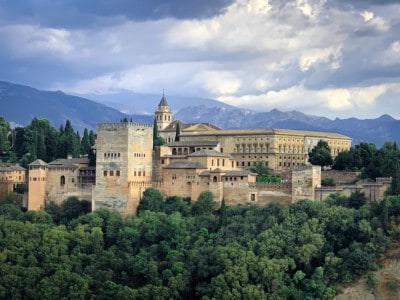
If you love history and culture, you’ll adore it as it’s steeped in both.
The Alhambra is a historic jewel that reflects its construction over many centuries and where you can see the influence of different religions, cultures and rulers.
There’s the Alcazaba, built in the 13th century during Spain’s Moorish era to provide protection from Christian soldiers.
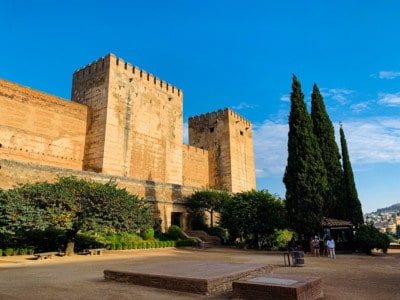
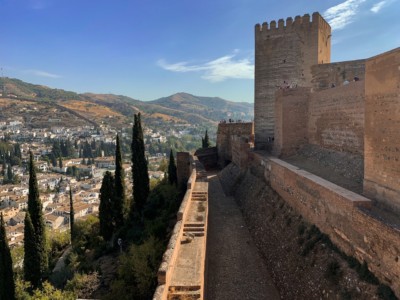
There’s also the 14th century Generalife gardens, complete with a palace that served as the summer residence for the kings.
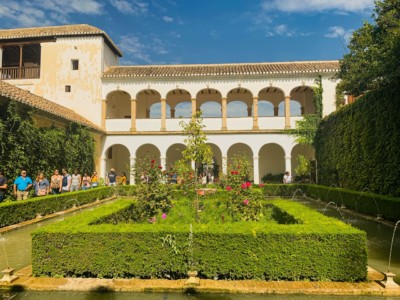
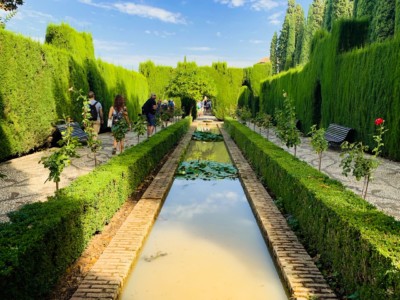
A further section of the Alhambra reflects the Christian era from the 16th century. Here, you’ll find the Palacio de Carlos V (Palace of Charles V).

This is a renaissance style building with a fine arts museum and the Museum of the Alhambra. It has a very different look and feel to it than the Moorish architecture.
Finally, there’s the utterly amazing Nasrid Palaces (the jewel in the crown for me).
This comprises a series of sections – both indoor and outdoor – that were built at different times during the 14th century.
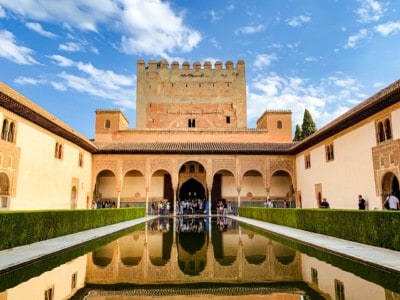
It’s where you’ll find the most brilliantly ornate rooms and courtyards, illuminated with incredible Moorish decorations and inscriptions.

You can easily spend half a day or even an entire day in the Alhambra. For top tips on on things you need to consider when planning your trip, see my full post on our visit here.
And for ideas of tours you can book (and my top tip would be to make sure you book early as tickets sell out months in advance), click here.
For the rest of your short break, you can explore Granada, a charming city to wander around (and partake in some of the wonderful Spanish tapas!).
Why visit in October or November?
The climate at this time of year is still likely to be warm and sunny. Temperatures can still be in the low to mid 20s in centigrade in October (the low to mid-70s in fahrenheit).
In November they can be in the mid teens in centigrade (low 60s in fahrenheit). This is pretty appealing to those of us living in more northerly parts of Europe.
When we visited, our guide also said that November was a particularly pleasant time to visit the Alhambra: the weather is good, but tourist numbers are lower.
This means that you would get to view this amazing place in relative peace and quiet (when we were there in September, the Nasrid Palaces were particularly crowded).
2. Ideas for short breaks: Germany’s Munich
Bavaria’s Munich is the third largest city in Germany and is situated in the south near the German Alps.
I haven’t specifically written about Munich but I have been lucky enough to visit for a short break (my Facebook page features a series of photos from my trip here).
I found there was more than enough to see and do to make me want to return.
The city centre is where the main action is if you only have a short time. Here you’ll find Marienplatz square, with its neo-gothic Neue Rathaus (new town hall).
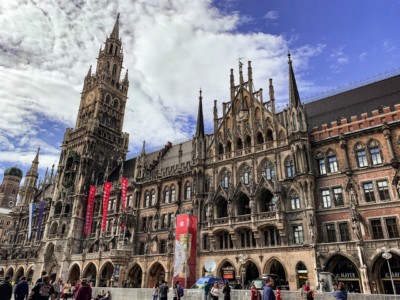
There’s also St. Peter’s Church, a Roman Catholic church with a tower looming almost 300 feet over the city.
Not far from Marienplatz square is the Residenz. Once a royal palace, it suffered heavy bombing during World War II and much of the building is now a reconstruction. You can visit the extensive art collection that is housed here.
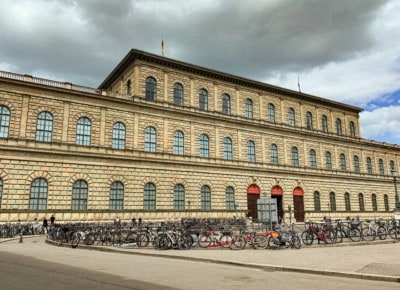
What particularly struck me about Munich was just how green it is.
We visited in late May and were fortunate enough to experience dry and relatively clear and sunny days. We were therefore able to do a lot of walking around the parks and gardens of the city.
I loved the English Garden, which is the largest public park in Munich. You can wander for hours here.
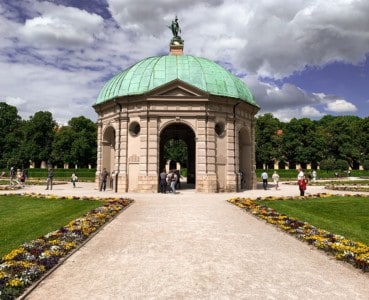
You can see the Monopteros (a Greek circular temple), and make your way up to the Chinese Tower. There’s a café/beer garden if you want to take the weight off your feet and grab a refreshment.
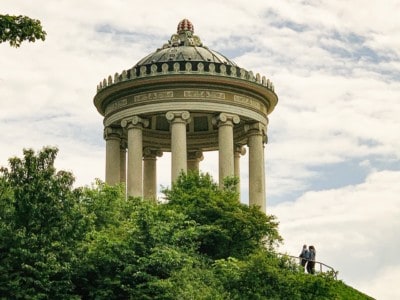
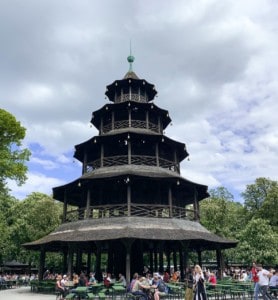
Also make sure you stop by the Isar river at some point. I got to see surfing on a river for the first time!

I also took the hop on/ hop off bus up to the Nymphenburg Palace. There is a gorgeous baroque palace here that once served as the summer residence for the Bavarian royalty.
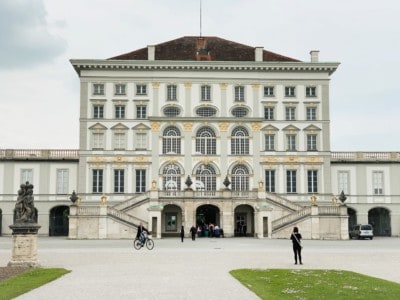
However, if you can, I’d recommended spending time walking through the extensive grounds. There’s a lot to see here so grab a map when you arrive or click here for one.
The palace grounds include lakes, pump houses, pretty pavilions and another monopteros.
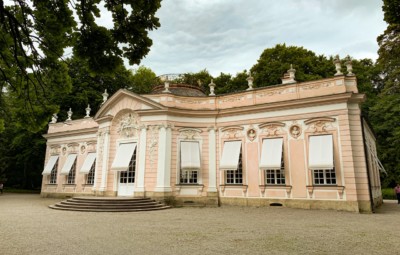
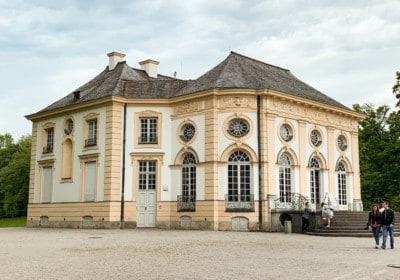
In the summer, you can even pay to ride a gondola on the main canal through the grounds.
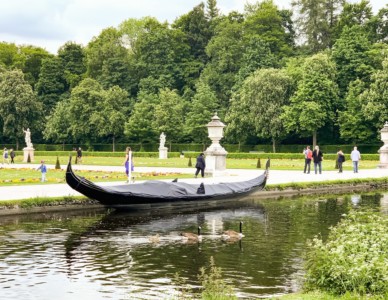
Why visit in October or November?
The weather is still likely to be relatively mild in early October, although it will start becoming chilly towards the end of the month and into November.
If you experience cold or rainy days, there are plenty of museums to duck into. These include the aforementioned Residenz, and the NS-Dokumentationzentrum, a documentation centre containing exhibits relating National Socialism in the city.
There’s also the State Collection of Egyptian Art, a BMW Museum, and the Museum Brandhorst, a contemporary art museum.
You can also sample some of the famous Bavarian cuisine (sausages – wurst – and saukerkraut – are big here).
For those visiting early in October, you can also visit the world famous Oktoberfest.
The festival actually starts in September, but runs into the first week of October: if it goes ahead this year, it is planned for 19th September to 4th October. It is the largest beer festival in the world and is visited by thousands of people every year.
If you can’t time your visit for Oktoberfest, you could alternatively take a tour around Munich’s beer halls.
3. Ideas for short breaks: England’s Bath
The next of my ideas for short breaks for 6 months’ time is Bath, a beautiful Georgian city in the South West of England. It’s an easy place to get to for a day trip from London, but equally there’s tonnes to do here on a short break.
My weekend in Bath revolved around a visit to the Roman Baths, the attraction that gave the city its name.
It’s now a museum where you can learn about the history of the waters and how the Romans used the baths. You can see remnants of saunas, steam rooms, and plunge pools.
The largest of the baths, the Great Bath, is a perfect place to sit and ponder life. Look up and you’ll see the statues of Roman Emperors flanking the walkway.
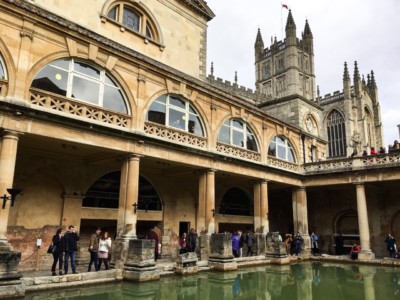
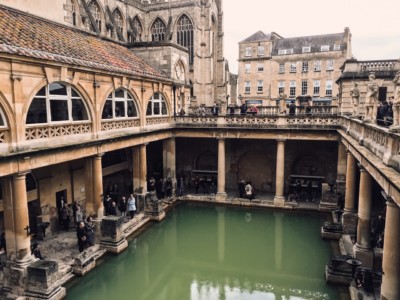
If that has whetted your appetite to try a spa yourself, you’re in luck as Bath boasts an amazing spa just a few minutes away.
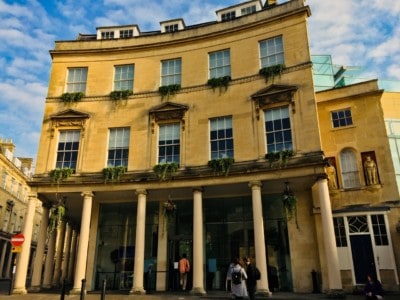
Visit the Thermae Spa and dip into spa baths and experience their “wellness rooms”. These include steam rooms, an ice chamber, an infrared room and a relaxation room.
However, the icing on the cake is the rooftop heated bath. Here you can immerse yourself in wonderfully warm waters (around 33.5 degrees centigrade). All whilst peering out over this UNESCO world heritage city.
There’s no shortage of things to do after this. Bath Abbey stands grandly outside the Roman Baths and is worth taking a look inside. It has magnificent stained glass windows and a huge bell at the far end as you walk in.
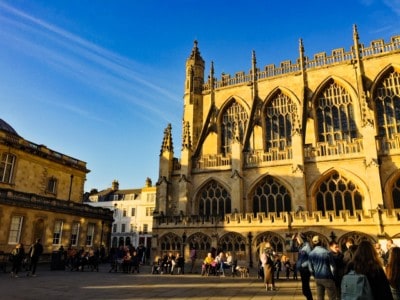
The Royal Crescent is also a must. A short stroll from the city centre and overlooking the Royal Victoria Park, it is cited on the Visit Bath website as “without doubt one of the greatest examples of Georgian architecture in the UK”.
At No 1 the Royal Crescent, there is now a museum that is presented as it would have looked during the Georgian era.
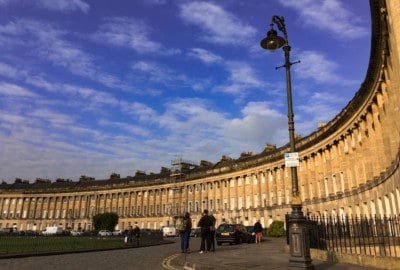
You can visit the Jane Austen Centre, a place to learn about one of Bath’s famous inhabitants. If you stroll through the Parade Gardens, a few minutes from the city centre, you’ll also find another tribute to her.
Here there is what I can only describe as a botanical book. It has a quote from Northanger Abbey – “Oh who can ever tire of Bath?” – in full view.

The park runs alongside the River Avon, not far from its weir. It’s a pleasant place to spend an afternoon strolling.
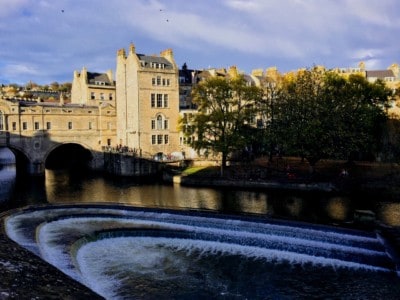
After all this sightseeing, you can stop and rest in a traditional tea room to sample the Bath Bun. One of the most famous tea rooms is Sally Lunn’s, where the Sally Lunn bun, (said to be the first Bath Bun), is a local delicacy.

Why visit in October or November?
You’re not going to be visiting Bath in October or November for the weather. But you may get crisp autumnal days where you can wander through the city’s streets admiring the beautiful Georgian architecture.
From late November there is often a Christmas market starting up (if it goes ahead this year, it will start on 26th November and run until 13th December).
The dark evenings at this time of year is also a perfect time to visit the Thermae Spa.
I went on a Friday night in November. I sat in the heated rooftop spa pool looking at the steam rising, with the view of Bath Abbey lit up behind in the night sky. It might be a bit of a cliché, but it really was magical.
4. Ideas for short breaks: Portugal’s Tavira
The Algarve is Portugal’s most southerly region, forming a fringe along the Atlantic Ocean. The area is blessed with beaches galore, picturesque white washed villages and a pleasant climate.
There is an abundance of towns to consider when deciding which Algarve destination to visit. Popular places include the likes of Lagos, Faro, Albufeira, Sagres and Monchique.
Whichever one you choose will very much depend on what you want to do and your personal preferences.
All bar one of these are on the coast (Monchique is situated inland), and so there is no shortage of places for a beach break. The Algarve is also well known for its golf courses with around 40 scattered across the region.
All of these places are worth a visit and has different things to offer.
Tavira
However, if you’re looking for somewhere a bit quieter, and a place that’s often overlooked, then you should consider a holiday to Tavira. The town is in the eastern part of the region, heading towards the Spanish border.
My post outlines seven things to do on a short break in Tavira. This includes wandering through the charming old town with its small squares and bridges, 19th century waterfront market and Moorish castle.
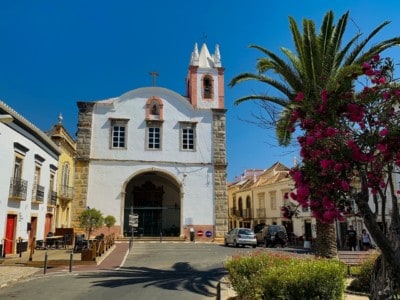
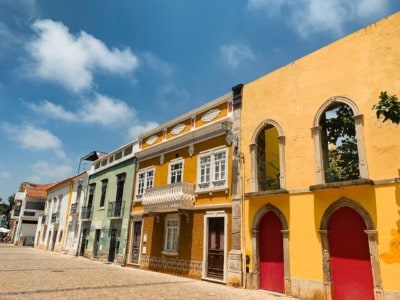
The castle is only small and is now in ruins, but a visit here affords you the opportunity to climb up high for great views over the town. Alternatively, you could view the town via the Camera Obscura, based in an old water tower.
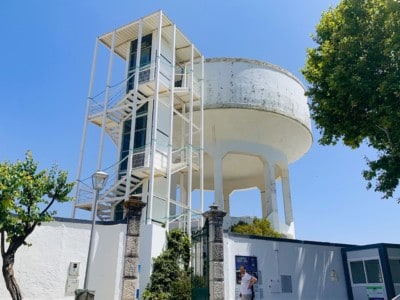
You can also use a trip to Tavira to have a bit of a chill out on the beach. Whilst the town is not directly on the coast, it’s just a short boat or car ride away.
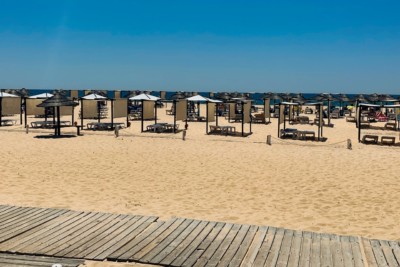
If you’re interested in nature or conservation, the the Ria Formosa is for you. It is is a natural wetlands park stretching some 60km along the coast, but protected from the sea in the Tavira area by the Ilha de Tavira.
It’s an extensive network of wetlands, salt marshes and canals. You can take boat trips and look at the wildlife that flocks here (all information on the area mentions the birds that stop off during their migrations).
Why visit in October or November?
The Algarve has a superb climate and is probably one of the best places to visit in mainland Europe for some late autumn/winter warmth. It can get up 23 degrees centigrade in October (around 73 degrees in fahrenheit) and can be in the late teens in November.
For me, this is still warm enough to constitute a beach break. So it’s a place to consider if you’ve missed the opportunity to get your bikini and sun lotion out!
5. Ideas for short breaks: Spain’s Palma, Majorca
Palma is the capital of Majorca, the largest of Spain’s Balearic Islands that sit in the Mediterranean Sea off the coast of the mainland. It’s a perfect spot to put on your list for a short break.
There’s plenty to see and do in the city, and with an airport just a few kilometres away, it’s an easy hop into the main action.
The old town is fascinating and also beautiful. There are heaps of pretty cobbled streets with traditional tavernas and tapas bars, and lively squares overlooked by tall majestic palm trees.
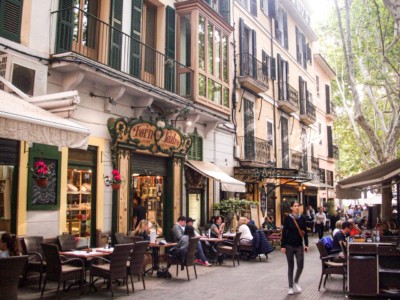
The gothic style Cathedral of Santa Maria of Palma – La Seu – is absolutely stunning and should not be missed. This is partly because of its sheer size (it’s bigger than the Notre Dame in Paris).
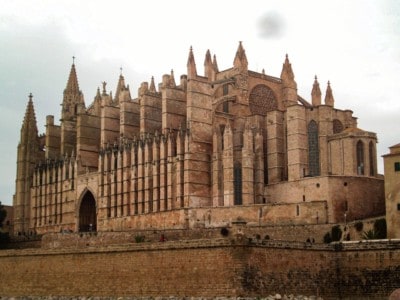
Next to this is the Alcazar (or Royal Palace of La Almudaina), the King’s summer residence. This sits on the site of an earlier Moorish citadel.
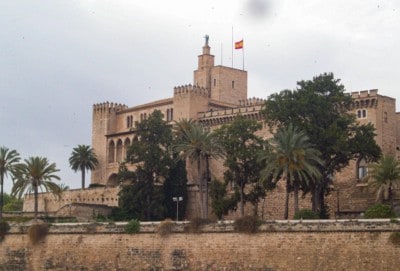
There is also a marina and miles of promenade where you can walk along the seafront. Children will also no doubt love the aquarium.
To experience more history while you’re in Palma, visit the 14th century Castell de Bellver. This is only 3km from the city centre and so is easy to get to (you can catch a hop on/ hop off bus that will take you here).
Perched high on a hill, it’s a circular castle (which is apparently quite an unusual shape for a castle).
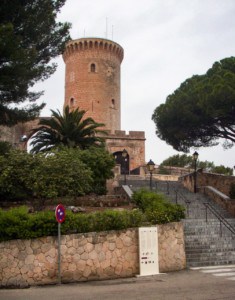
It has a long and fascinating history that includes being a royal palace and a military prison.
For train buffs, there’s also the ‘Orange Express’ vintage train to take a trip on. We booked onto this and loved it.
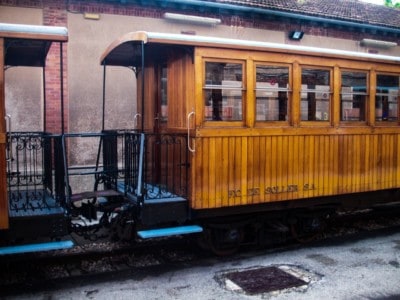
The train ride is 32km from Palma. It trundles through open valleys and orchards, past the mountains and eventually to the small coastal resort of Port de Soller.
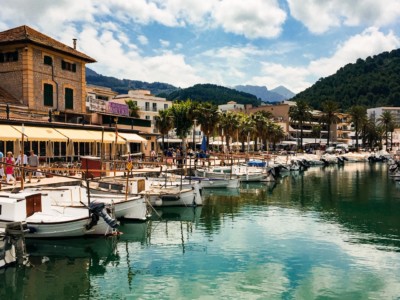
It’s a lovely day out and perfect for both train enthusiasts and romantics.
Why visit in October or November?
Majorca has a Mediterranean climate with hot summers and mild winters. In late October, the temperatures can be in the low 20s in centigrade/ low 70s in fahrenheit.
With heaps of things to do in the city centre, plus beautiful beaches a short drive away, it is a perfect short break: for culture vultures, beach lovers, those looking for some romance and families after a quick half-term getaway.
6. Ideas for short breaks: Jersey in the Channel Islands
Jersey is the largest of the UK’s Channel Islands, but only spans 45 square miles. It’s a short 40-minute flight from London (around an hour and half from Paris) which means it is a perfect place for travel on a time budget break.
Despite its small size, you can pack in a lot on a short trip to Jersey. We focused on a visit to the island’s war museum and a road trip around its stunning rugged coastline.
Our road trip was half a day in duration and took us to a number of different locations around the entirety of the island’s coastline. These included St. Aubin’s Bay and St. Brelade’s Bay, on the south west coast with their wide, sweeping bays and beautiful sandy beaches.
We also stopped by at Noirmont Point, notable for its war memorial and abandoned German gun emplacements and bunkers.
We saw the Corbiere lighthouse, with its tower and lamp looming 119 feet high above the rocky outcrop on which it sits. This is apparently one of the most photographed sights in Jersey.

At low tide, you can walk across the causeway that links it to the mainland.
After visiting the lighthouse, we headed north to St Ouen’s Bay. This is the island’s longest bay and perhaps one of the most dramatic parts of the coast. It has a long sweeping bay and pristine sandy beach.
In another climate it wouldn’t seem out of place in, for example, Australia or New Zealand (my photos seriously don’t do it justice – they were taken on an old camera).
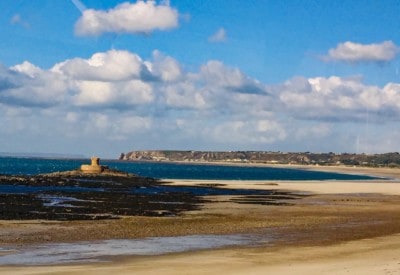
You’re reminded though that you’re not in the southern hemisphere by the remnants of the Atlantic Wall the Germans built to prevent the British from landing here.
Finally, our trip ended with a stop in Gorey on the east side of the island. This has a 13th century castle (Mont Orgueil castle) that towers above the harbour.
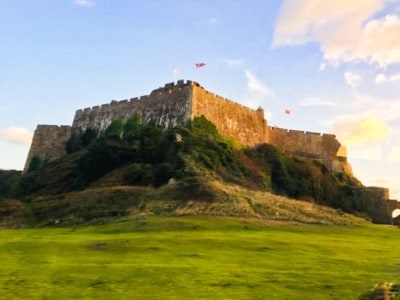
It’s a picturesque little place and definitely worth a visit.
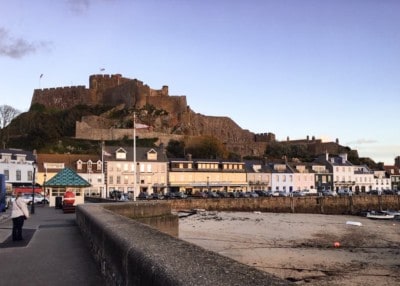
Why visit in October or November?
We visited Jersey at the end of October. I’d be lying if I said it was warm, but we experienced relatively clear and bright days. That said, it was really quite blustery, especially when you reached the coast.
But the advantage of these chilly, blustery days was that it meant that the beaches were pretty much deserted.
Combined with the summer tourist season being over – when I imagine the beaches get really crowded – this gave us the opportunity to appreciate just how amazing these are.
The views out to sea were also incredible; on clear days you can see the neighbouring islands.
I hope my post has given you some inspiration and some ideas for short breaks that you can potentially take when it’s safe to travel again. Let me know what you think.
For further ideas for short breaks – both in Europe and worldwide – go to my website.
Emma



